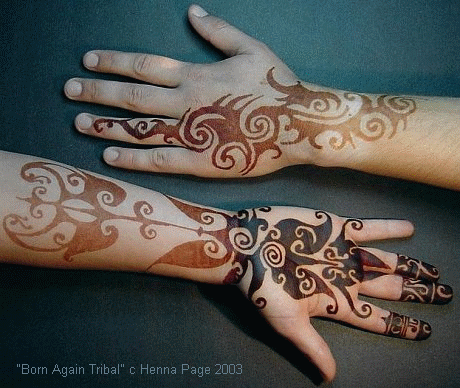|
Stratum Corneum: Why do henna stains on the the palms and soles last a long time? Why do palm and sole stains get so dark? Catherine Cartwright-Jones c 2003 Kent State University Henna stains on palms and soles go many layers deep. Palms have, on average, 50 cell layers of stratum corneum. Soles also have an average of 50 cell layers. People who go barefoot build up deeper layers, and people who do manual labor have deeper layers to protect the living tissue underneath. People who are "couch potatoes" and who always wear shoes and socks have fewer layers. Heels have the thickest stratum corneum, averaging 86 cell layers, with some people having over 120 cell layers! Henna can penetrate farther into these dead layers, and can saturate more completely. The more layers you have, the darker the stain ... usually. If people have been sick, poorly nourished, or stressed, they will not regenerate cells as quickly as people who are healthy, well fed, and happy. Happy, healthy, well-fed people frequently get the darkest stains, and those stains last the longest. |

| References:
"Number of Cell Layers of the Stratum Corneum in Normal Skin -
relationship
to the anatomical location on the body, age, sex and physical
parameters"
"Skin, the Human Fabric"
Back to Stratum
Corneum Index
Can't find what you're
looking
for? Try:
*"Henna, the Joyous Body Art" the Encyclopedia of Henna Catherine Cartwright-Jones c 2000 registered with the US Library of Congress TXu 952-968 |